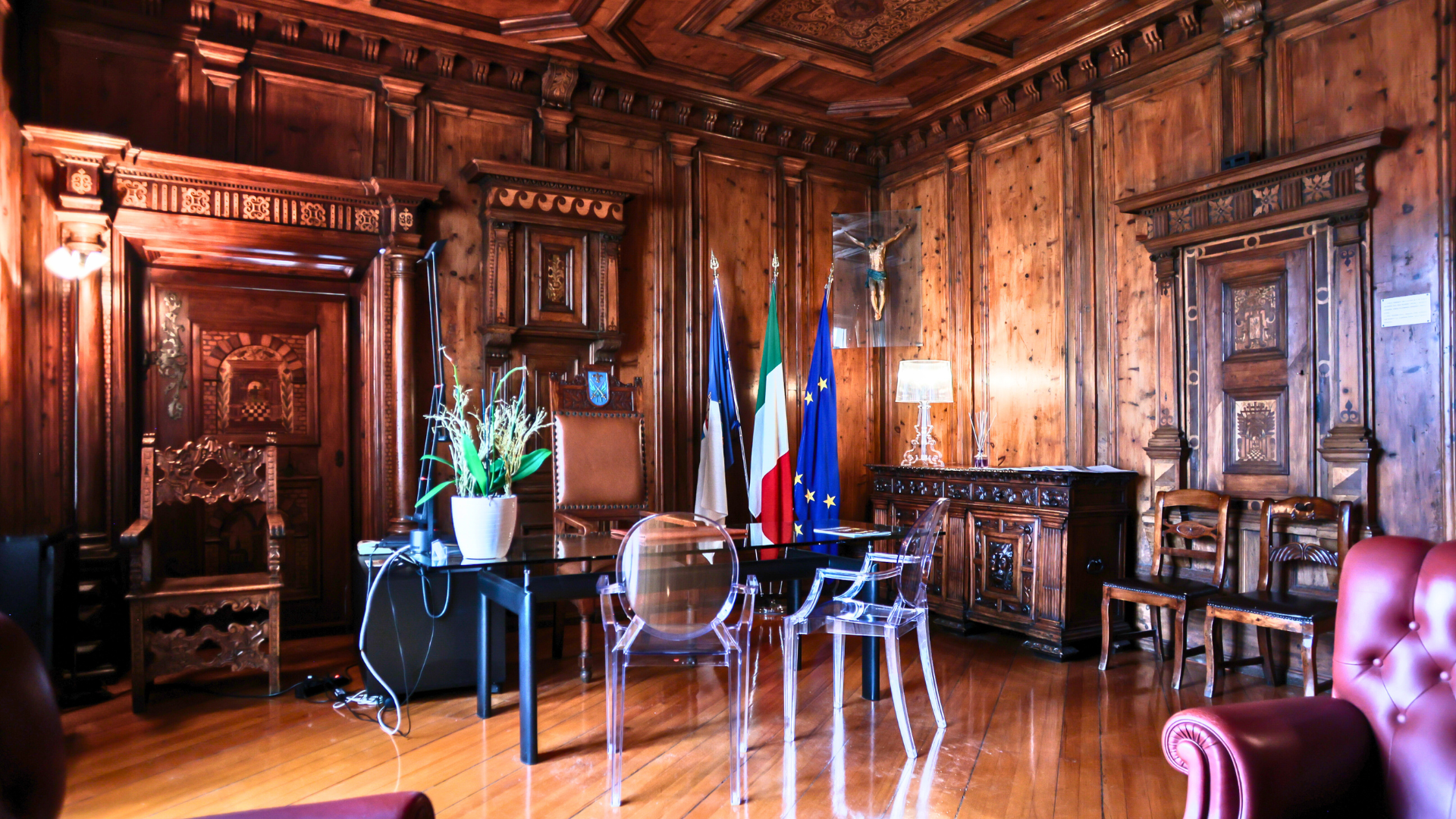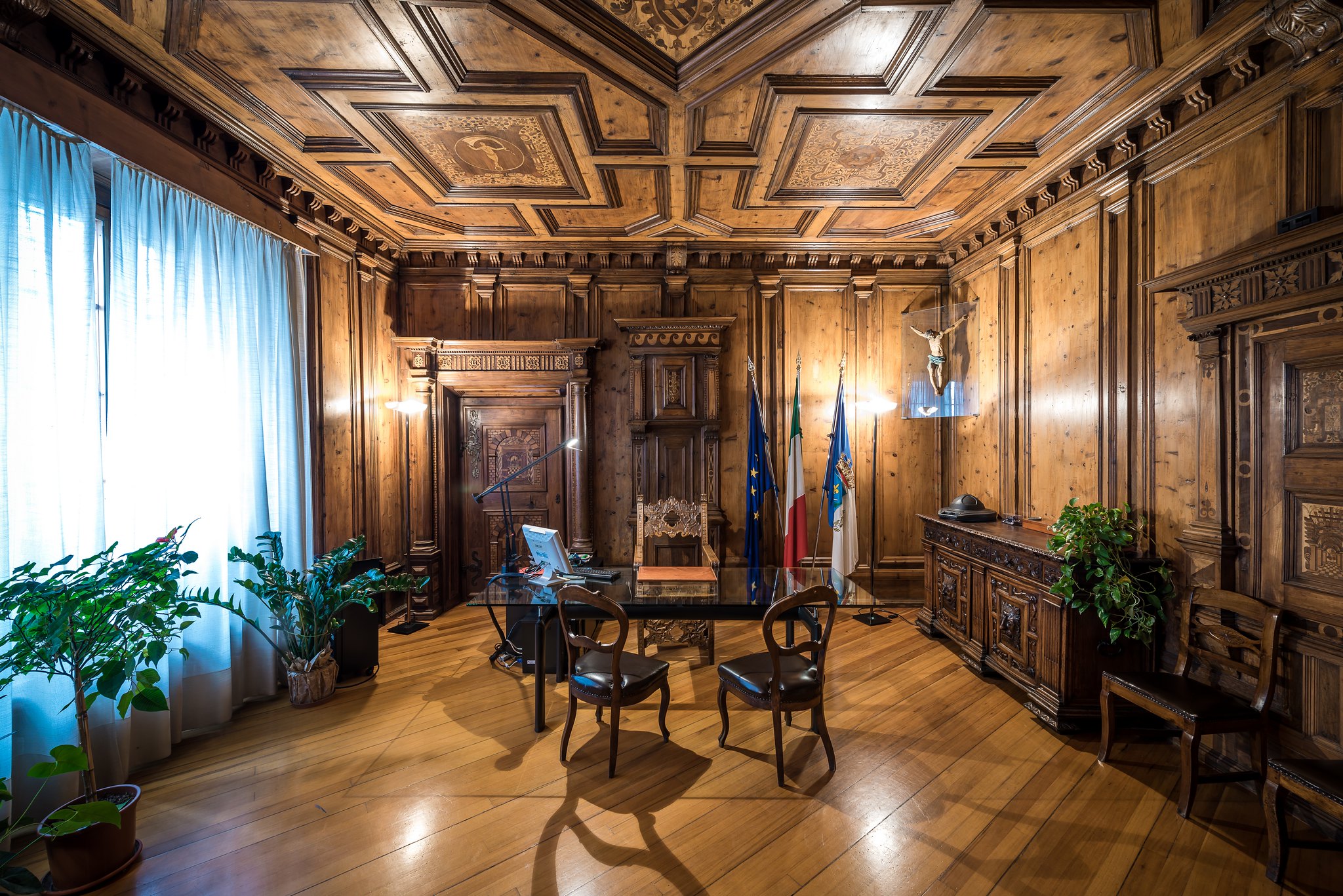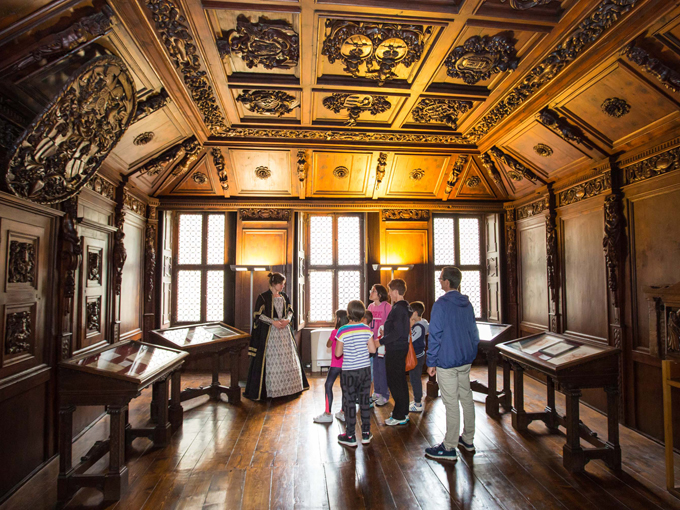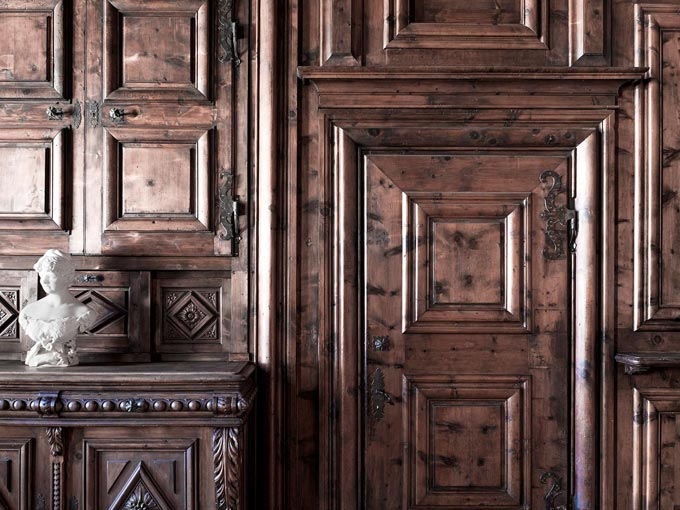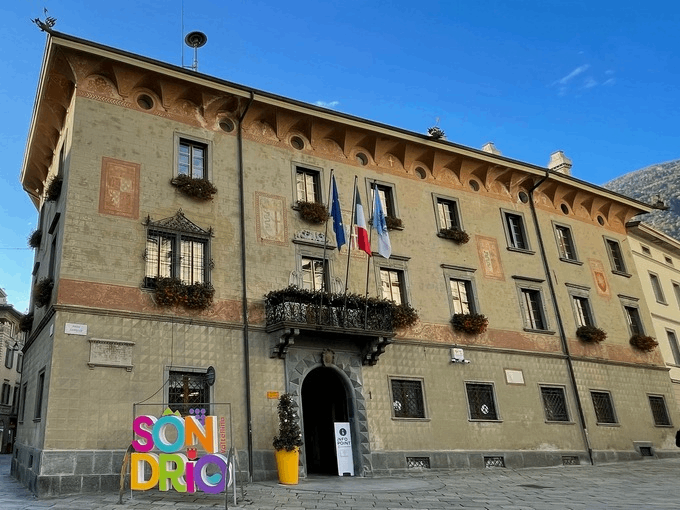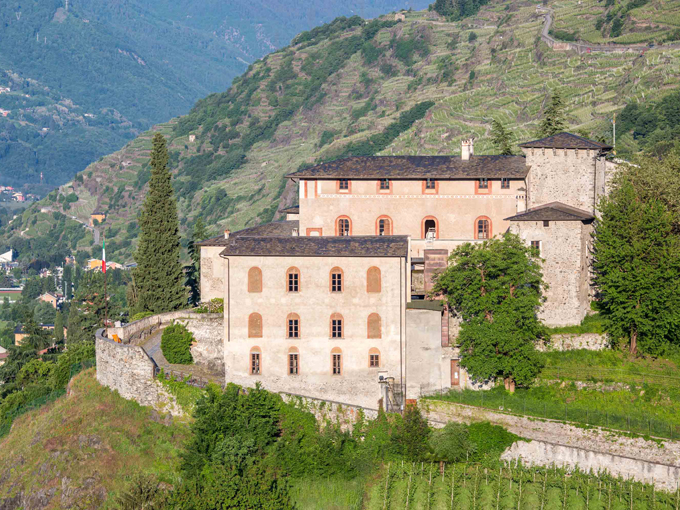Rigamonti StŁa
The stŁa was the heart of the traditional home, whether rich or poor.
It was entirely paneled in wood and warmed by a stove, usually in delft ceramic tiles, stoked from the outside. The wood burned was usually Swiss pine or stone pine, which is resistant to temperature changes, emits a pleasant balsamic odor and is highly resistant to wood borers.
Unfortunately, stŁas were considered furniture, and so were often disassembled, sold or moved to other locations, or even broken apart so that the wood could be used to make “antique” furniture.
Rigamonti stŁa, in Palazzo Pretorio, takes its name from the last family to reside in the palazzo from which it was taken, which used to stand in the little piazza dell’Angelo Custode. Acquired by the city in 1954 and transferred to the mayor’s office, it has not undergone important modifications from its original aspect, retaining its irregular shape with inlaid and carved panels that appear to date to the late 1500s. The two main doors are instead of visibly more recent origin (18th century).
†All the frames are in walnut, while the rest is in Swiss pine. The ceiling consists of five panels containing coats of arms of aristocratic houses, floral decorations and the figures of Mercury and Fate.
The author, or the artist’s studio, that executed the work remains anonymous, as was the custom at the time, since most of the work was commissioned by private individuals.

